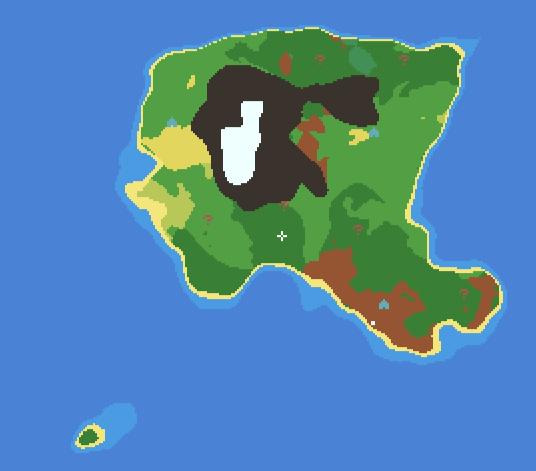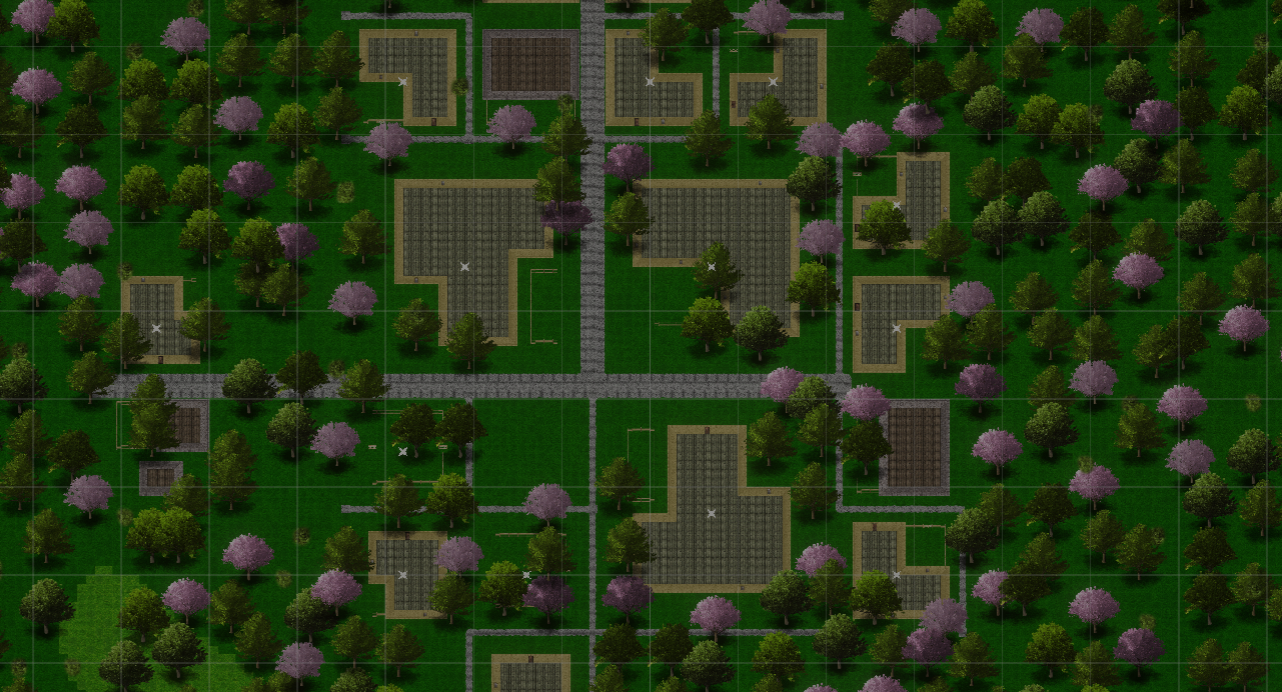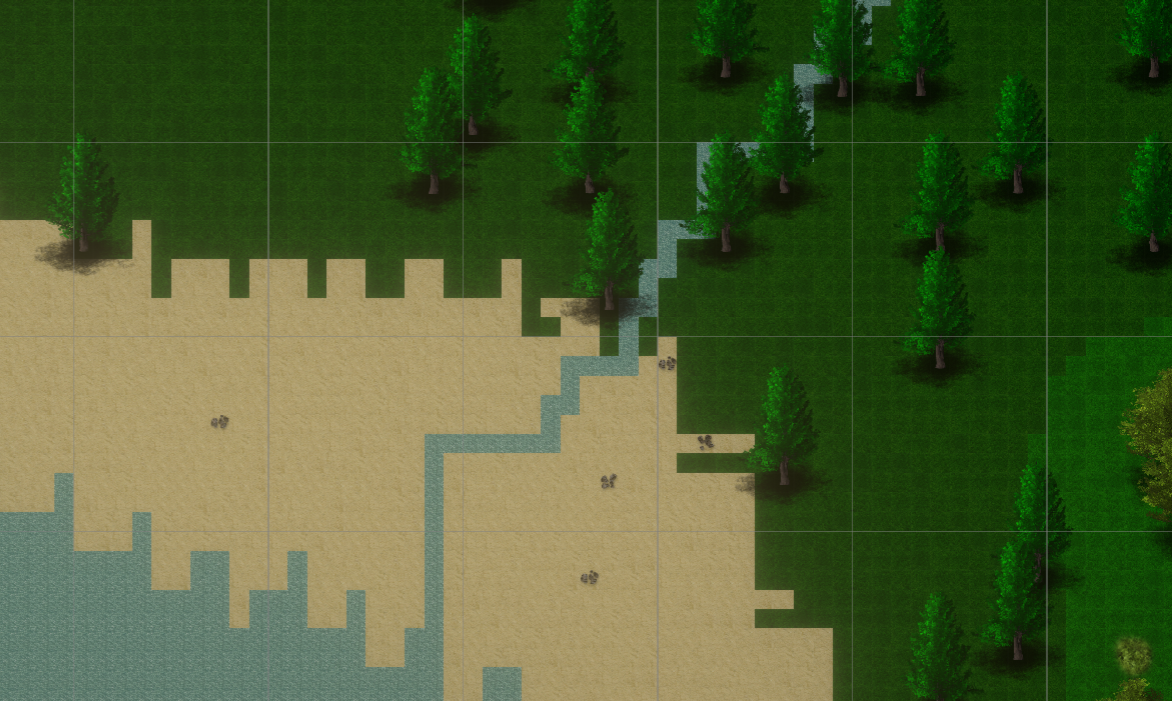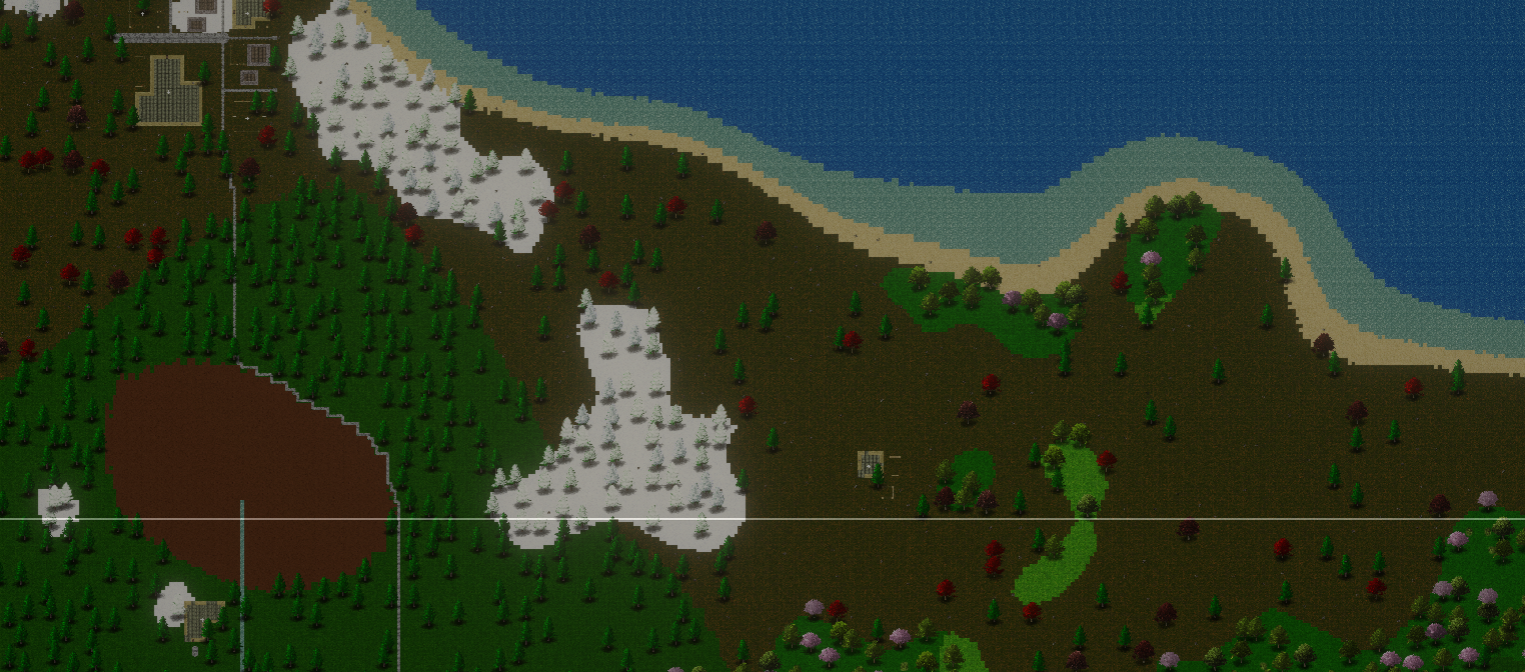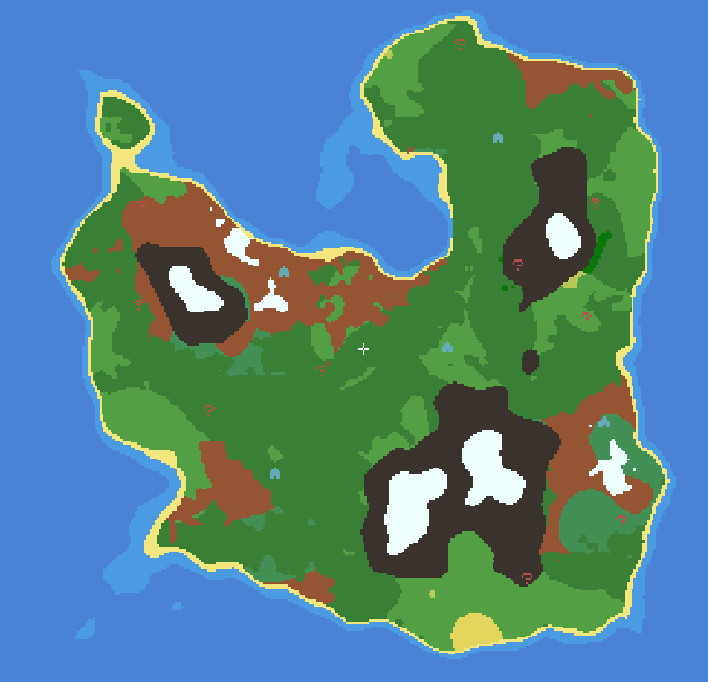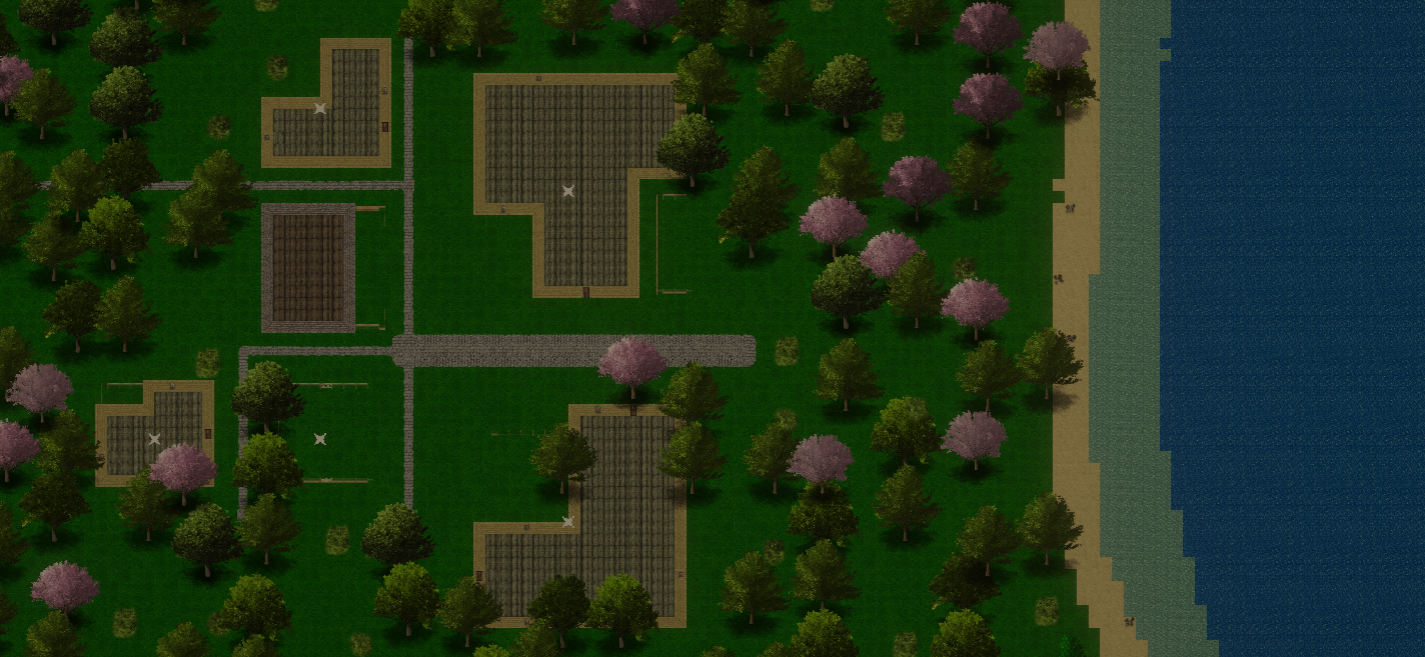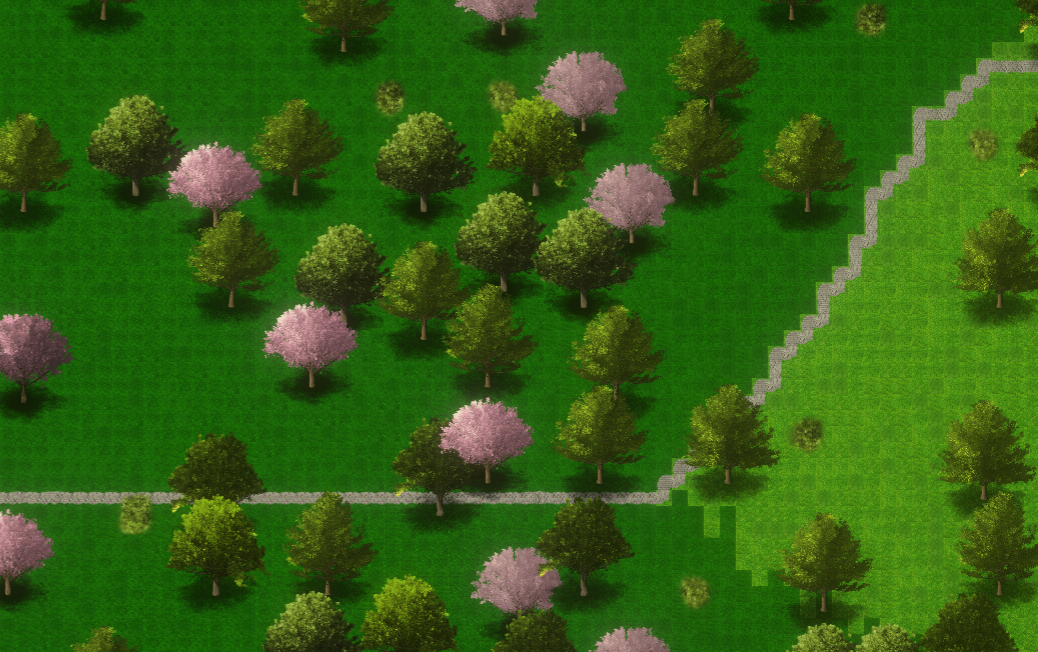Isles of Generation
Case Study
The Goal
We aimed to delve into the methodologies employed in the procedural generation of realistic gaming worlds. This involved creating everything from expansive landmasses and diverse biomes to meandering rivers and quaint villages. This leveraged robust algorithms like Perlin noise, Poisson disc sampling, and A* pathfinding.
Whilst the game was wholly constructed in two dimensions, the principles harnessed could be seamlessly transposed to fabricate a 3D landscape.
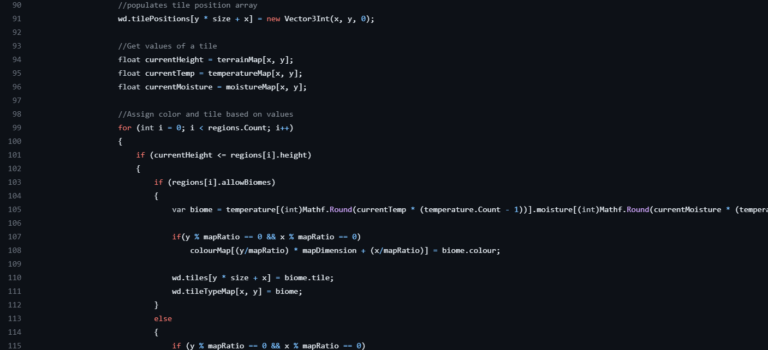
The Terrain & Biomes
This prototype was coded using Unity and C#, with the primary terrain generation employing Perlin noise. By layering noise in a series of octaves, we were able to create a ‘cloud’ texture, yielding a richly varied and intriguing terrain. Additionally, we computed distinct noise values for elements such as moisture and temperature, enabling us to categorise specific biomes for each area. Consequently, areas exhibiting high rainfall and temperature patterns could be designated as rainforests, whilst those presenting cold and dry conditions were characterised as tundra.
The Features
Different facets of the world necessitated distinct algorithms. For instance, villages required an intricate set of instructions to convincingly generate a grid encompassing roads and buildings. Rivers were designed to adhere to the laws of gravity, originating in mountainous regions and gradually descending towards the ocean. Roads, on the other hand, would wind their way between towns, consciously avoiding challenging biomes like mountains.
Moreover, even the distribution of trees employed an approach known as Poisson disc sampling. This ensured an even dispersal of wildlife, mitigating the possibility of peculiar clusters which might have occurred due to purely random placement.

